How To Set Up Free Plus Shipping Shopify
Free Plus Shipping is one of the great ways to acquire leads and generate revenue when it comes to dropshipping. Although this method is no longer new to the dropshipping world, and many people have been using it, it still can bring you results if you do it correctly.
In this article, I will get into the details of what Free Plus Shipping is, how it works, and why you should use it.
What is Free Plus Shipping?
Basically, Free Plus Shipping (FPS) is a type of product offers, and the name reflects what that offer is; free plus shipping. An FPS product is a product that you offer for free, and charge a fee for its shipping (Free and Ship, Just Pay for Shipping).
Does it mean that you’re giving away the product? Of course not. No businesses can survive by giving products away for free. What Free Plus Shipping does is make your offer look more tempting to the customers. Let me explain.
Let’s assume that you find an airpods case that costs $1.5 on Aliexpress, and now you want to sell it at $7. Instead of setting the retail price at $7, you set it as free, but the shipping cost is $7.
It’s important that you have to factor in all of your costs when you decide the shipping cost. For example, if it costs you $1 for a conversion for the airpods case, and shipping from China to your customer costs $2, you can make a total of $2.5 as your profit. If a conversion costs $3, you might want to set your shipping cost at $9 if you expect to make $2.5 per sale.
Free Plus Shipping works because who doesn’t like free products? And many people are willing to pay the shipping cost to get such a great deal. However, it’s worth mentioning that you shouldn’t set shipping cost too high, or your customers would know that you have already included the price of the product into your shipping cost. How much people are willing to pay for shipping varies across regions, so you should set your shipping cost based on your target market.
What is the purpose of free plus shipping?
Free Plus Shipping is a great technique to apply to your dropshipping store. While setting up free shipping offers is a piece of cake, you might be wondering why you should use this technique (it seems a little bit fishy, doesn’t it?).
The purpose of free plus shipping is that it allows you to add the word “Free” into your marketing message. People like free stuff, and when something is free, they will be more likely to go and check it out. As a result, when you run ads on your products with the word “Free” in your ad copy, you will acquire a lot more engagement, and more people will know about your business.
This does not necessarily mean the word “Free” will bring you a lot more conversions because some people are willing to pay $9 as a shipping cost for a free product, but some do not. What you will definitely get here is traffic to your website, and when it comes to eCommerce, traffic is everything. With the website visitors you have attracted, you can retarget them with your other products, which is when you make money.
How to use free plus shipping?
You can use free plus shipping for your dropshipping business in two ways:
- You can use it as a business model
- You can use it to drive traffic to your website and upsell to that traffic.
For the first option, which is using free plus shipping as a business model to work, your product would have to be on-trend and in great demand. It’s worth mentioning that this business model is extremely hard to survive long-term because trendy products are fads; they come and go very quickly. However, if you’re not planning to stay committed to any product, and love to ride the waves of fads, free plus shipping could potentially make you lots of money.
The second option is more popular. Those who use free plus shipping to drive traffic to their websites are not looking to make money with their first sale; they want to get the traffic. With this traffic, they can upsell and cross-sell other products in their stores. Using this approach means free plus shipping is not your revenue driver, and you should try to reach the break-even point when you’re using this technique. To be more specific, the price of your product should be at a point where you can get traffic at zero costs.
What price ranges should you use for free plus shipping to work?
Let’s be real - you cannot apply free plus shipping to a $100 product. If you do so, what you get from your customers is not revenue, but suspicion. On the other hand, if you choose low-cost products, you can use free plus shipping, but your profit margin will be smaller. So, what is the ideal price range?
What I would recommend you to pick are products that cost a total of less than $10 to reach your customers (marketing and shipping costs included). Here’s the rule of thumb:
(Retail price + actual shipping cost) should be more or less the shipping cost that your customers will be willing to pay. If a T-shirt costs $20 at retail and shipping it to your customer costs $2, but your customers are not willing to pay $22 as the shipping cost for the T-shirt, then that T-shirt is not viable for free plus shipping.
Advice for using free plus shipping:
As mentioned above, there are two ways you can incorporate free plus shipping into your strategy, but in reality, using free plus shipping as your entire business model is just not really practical. When customers look at a store and see that there are too many free products, they will be skeptical. Aslo, as explained in Section 4, using this technique will limit the price ranges that you can sell on your store.
Therefore, to reach its full potential most people use Free Plus Shipping as a marketing technique to raise awareness of their brand, as well as bring visitors to their online stores. The underlying strategy here is creating a funnel to upsell and cross-sell other products.
If a customer buys from you once, they will be more comfortable to buy again and again (assuming that you deliver high-quality products and offer decent customer service). Free plus shipping is the key to drive customers into your funnel, so the purpose of using it is not to make money, but acquire traffic. So, it’s okay to just break even or even lose some money for this free-plus-shipping sale as you can make profits off of the traffic you have acquired through upselling and cross-selling.
There are (at least) two ways you can sell to the customers you acquire via free plus shipping. Once they bought from you, you got their emails. First, you can use those emails to nurture customers and sell more products. Second, you can retarget your website visitors with your other products via Facebook Ads, Google display ads and Youtube ads.
That’s how you can make money with free plus shipping in the long-term, and that’s how you should use this technique for your eCommerce business.
How to set up free plus shipping on Shopify?
There are two methods that you can use to set up free plus shipping on Shopify; one is free, but a little bit difficult to set up while the other costs a little, but is easier to deal with. Let’s walk through each of them.
Set up free plus shipping for free:
To set up free plus shipping for free, you need to set up the weight-based shipping option on in your Shopify dashboard. Here’s how.
Step 1: Go to your Shopify admin > Settings > Shipping.

Step 2: Go to Create new profile to set up your shipping costs.
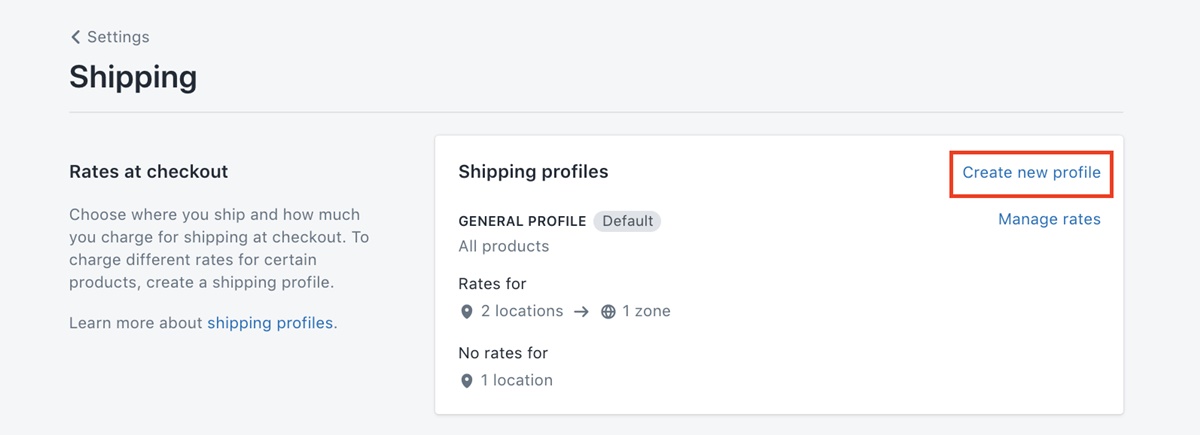
Step 3: Give the shipping profile a name.
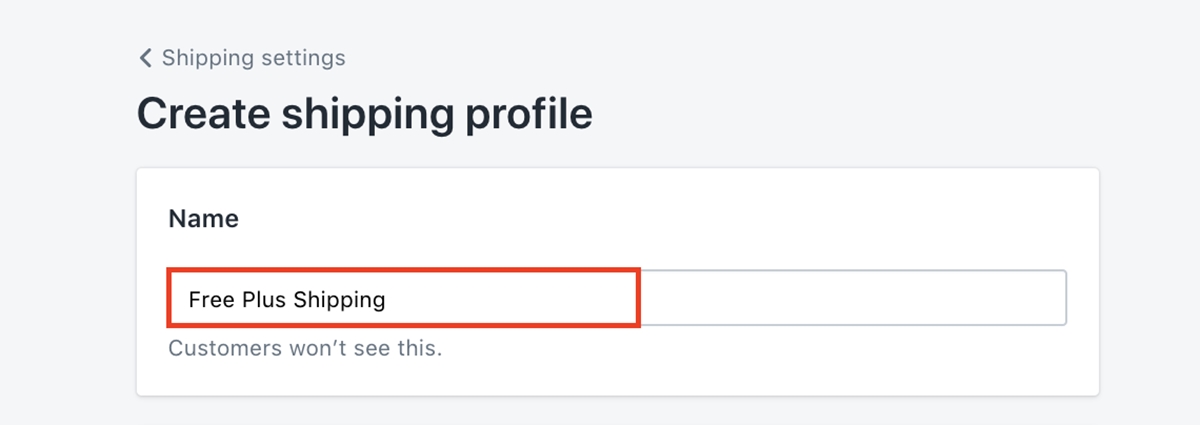
Step 4: Create your shipping zone.
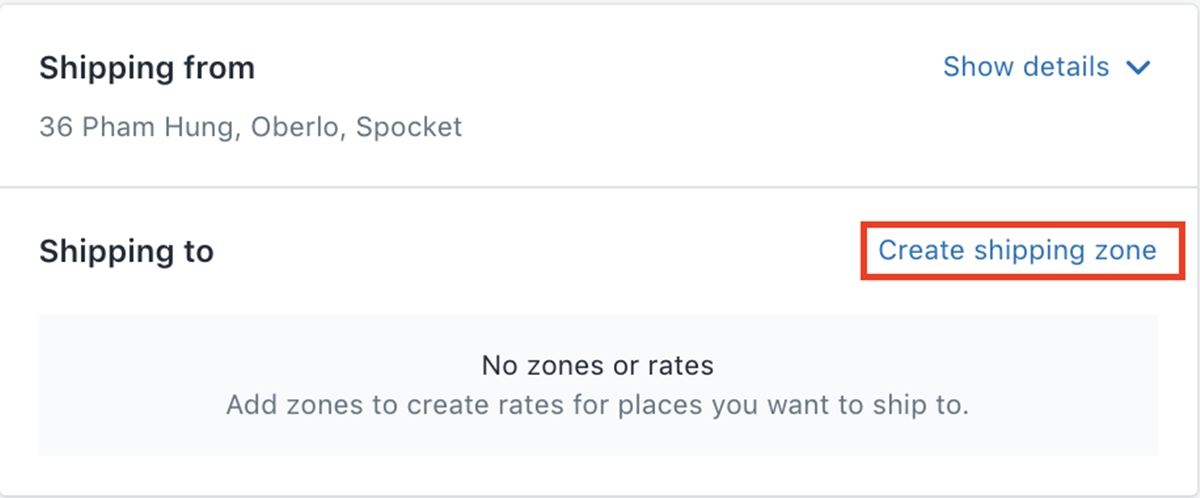
This is the shipping zone where you want to apply free plus shipping. For this example, I’ll take the US.
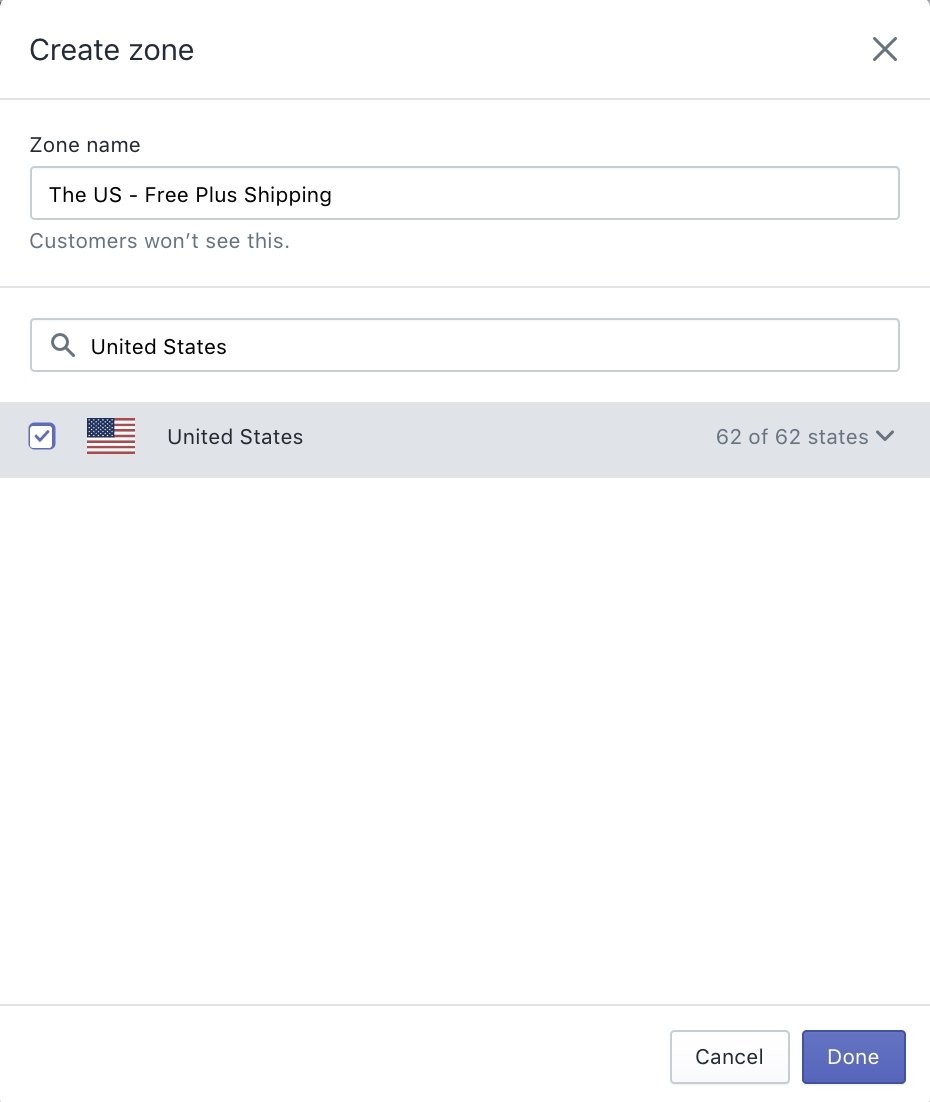
Step 5: Add rates
Click Add rate > Add conditions
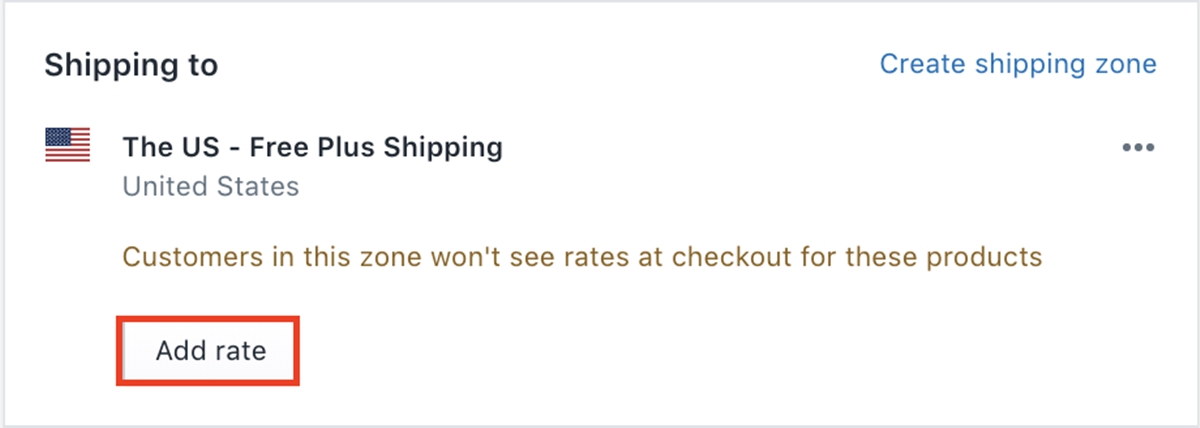
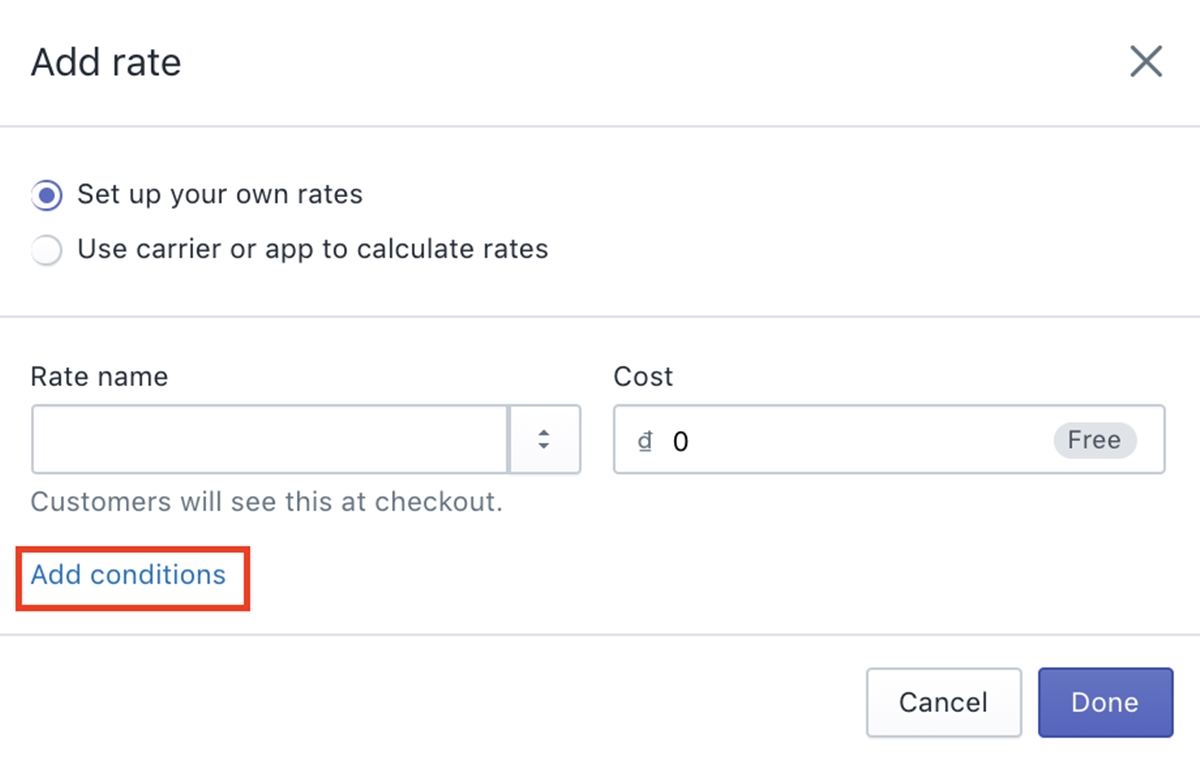
Choose the Based on item weight option.
Now you can create rates based on the weight of your products. In the Rate name field, you insert a name.
Let’s assume that the product you sell weighs 1 kg, and the free-plus-shipping price you want to set is $5 per item. You have to create multiple options in case your customer buys more than one unit.
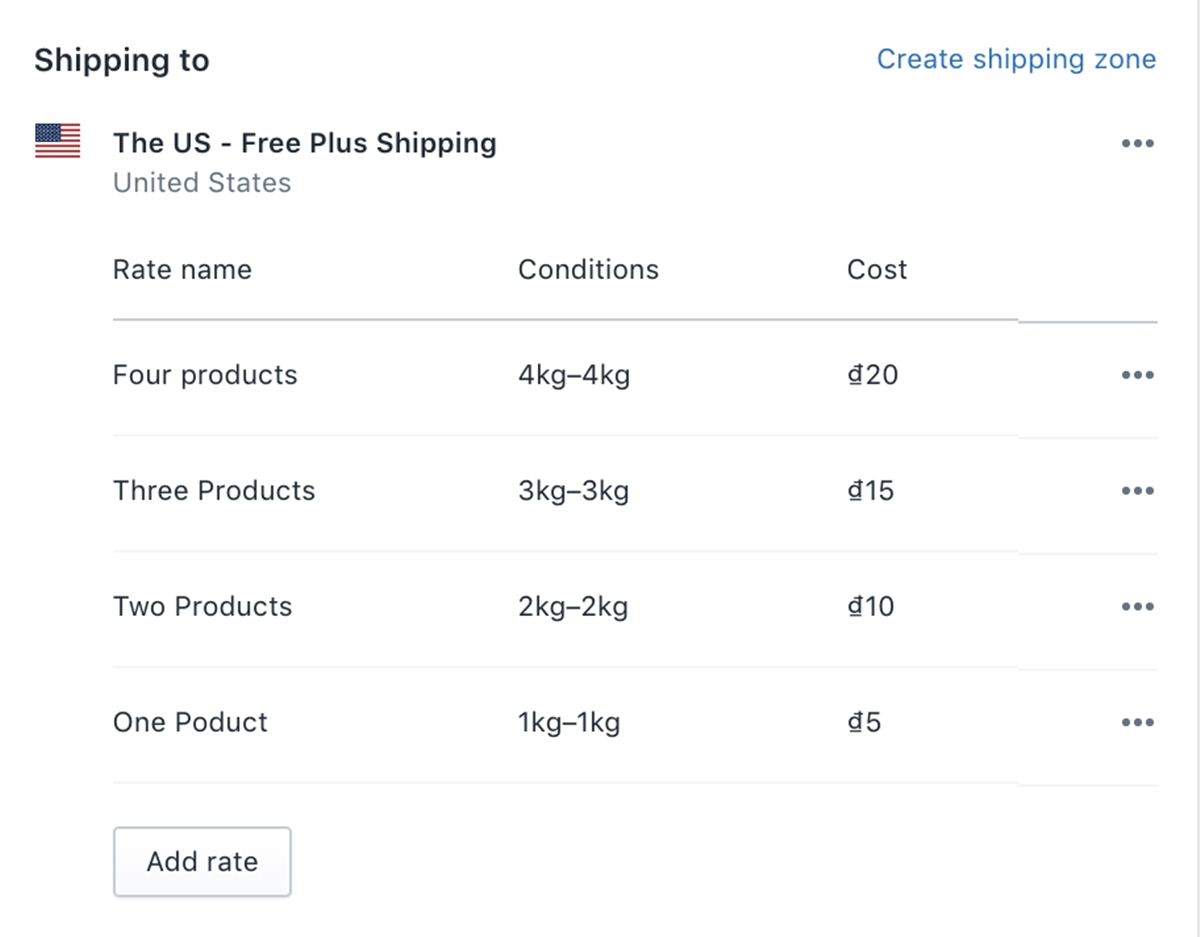
Remember to click Save
Now your customers will need to pay between $5 - $20 and more, depending on how many items they want to purchase. Remember that this free-plus-shipping price is not your shipping cost alone, but includes your retail price too.
Step 6: Set the Sample box weight to 0 kg.

In the Shipping section in your settings, edit the weight of your sample box to 0 kg in the Packages section.
Step 7: Set the weight of items with no free plus shipping to 0 kg, and items with free plus shipping to 1 kg.
You need to do this because if you don’t, the shipping rates for free-plus-shipping products will apply to all products in your store.
Go to the page of the product you need to edit, head to the Shipping section.
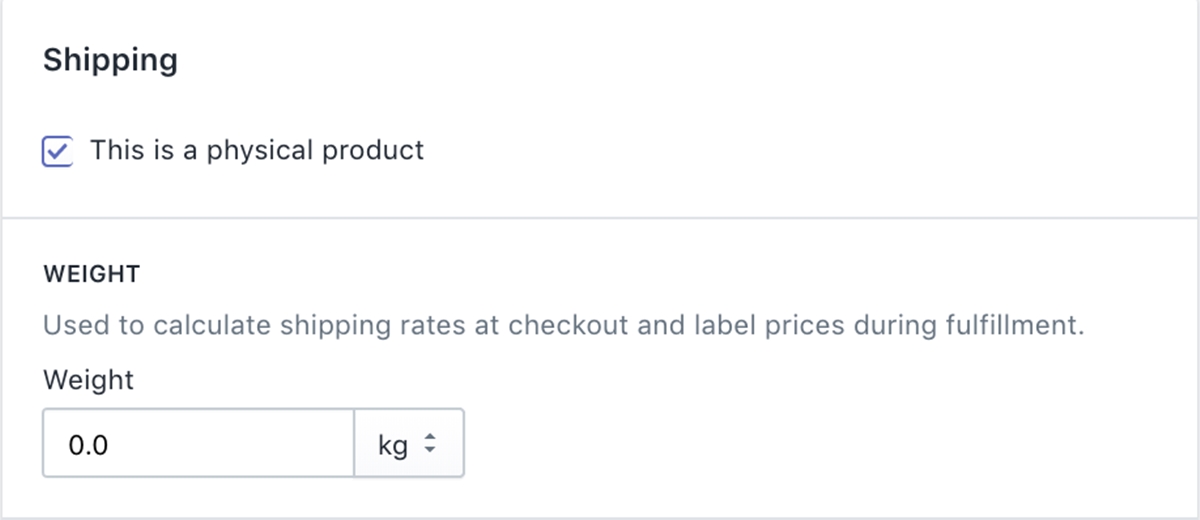
For products without free plus shipping, set the weight to 0 kg and the price to your retail price.
For products with free plus shipping, set the price to $0 and the weight to 1 kg.
Step 8: Try placing a few orders to see if your setup works properly.
And that’s it, you have successfully set up the free plus shipping option for products on your store. One drawback of this manual method is that you have to create all of the weight possibilities or the number of products you customers can possibly buy (mentioned in Step 5).
If you set up a shipping cost for 4 products at maximum, when your customer places an order of 10 items, the price is the same as 4 items.
Another drawback is that you can only have one shipping rate for all of your free-plus-shipping products, because this is a weight-based shipping setting, so every product that weighs the same costs the same.
Set up free plus shipping at a cost:
There are apps on the Shopify app store that can give you more flexibility to set up your shipping rates, though they come at a cost.
One of the best apps for this is Better Shipping.

This app enables you to set the shipping cost for each product individually. There are also a lot of different types of setups you can have with this app.
You can even have your no-free-plus-shipping products on free shipping while still having the free plus shipping option for other products at the same time.
You can apply discounts on the shipping costs based on pre-established criteria. For example, you can offer 10% off the shipping cost if your customer buys more than one unit of the sample product.
Simply put, this app beats the manual setting in every aspect, but the only downside is that it costs money. Another downside is that Better Shipping requires carrier calculated shipping.
Note: Carrier calculated shipping, also called “real-time rates,” is shipping rates automatically calculated based on FedEx, UPS, and USPS rates. This functionality uses package weight, dimensions, and addresses to determine accurate shipping prices in real-time.
This feature is not available for the $29 plan of Shopify, and only for the higher plans. However, you won’t have to select the $70 plan to get this feature. Instead, you can contact the Shopify Support and ask them to add this function to your existing plan. You will need to pay an extra of $20 for your existing $29 plan if you pay on a monthly basis. It will be free of charge if you pay for your plan on an annual basis. It’s up to you how you want to pay, but either way, it’s still better than choosing the $79 plan when you don’t need it.
If you choose to pay the extra $20 to get the feature, you will have to pay $49 per month for your Shopify plan, plus the Better Shipping app costs $14.99 a month, the total will be $64 a month to get this flexibility to set up shipping rates. You should make your decision based on your budget.
Final words
I hope this article has given you a clear understanding of what is the free plus shipping method in dropshipping and how to use it. If there’s any aspect of this technique that I have not offered, please leave a comment below. :-)
New Posts






